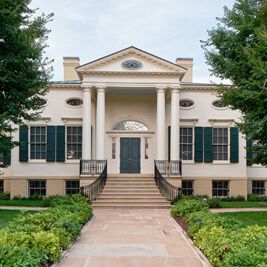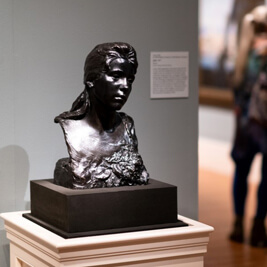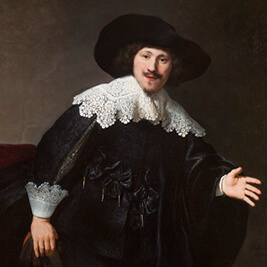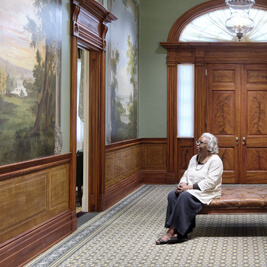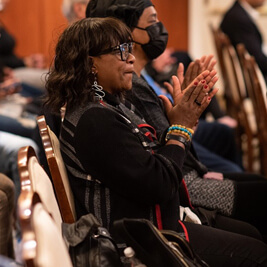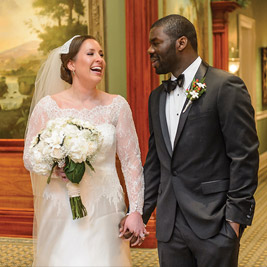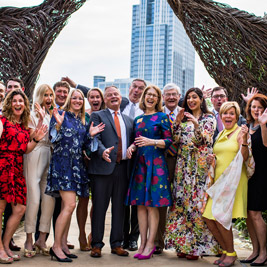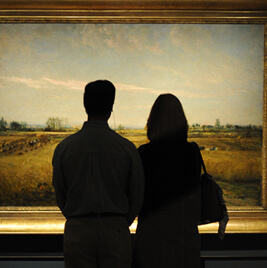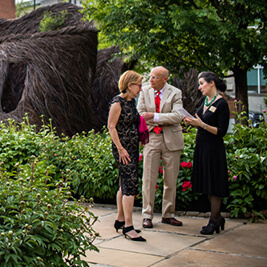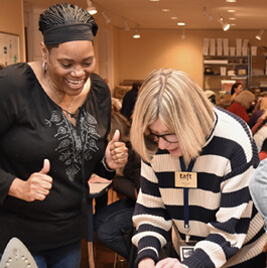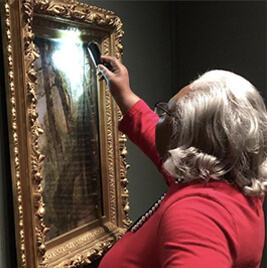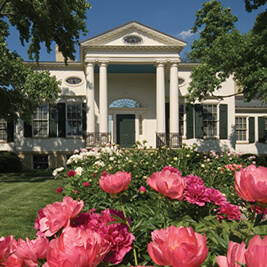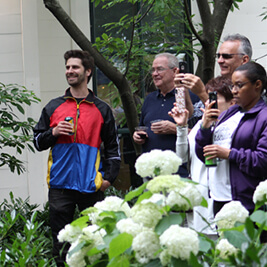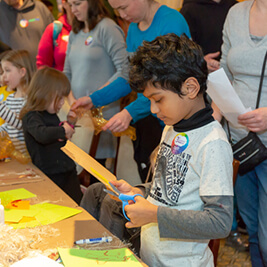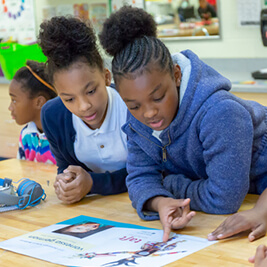- Do + See
- Dine + Host
- Give + Join
- Educate + Learn
Fabulously Fierce Countdown | Curator Picks Go Toe-to-Toe For the #1 Spot
Museum Musings
Curious what my favorite shoes are in our upcoming exhibition Walk This Way | Footwear from the Stuart Weitzman Collection of Historic Shoes? Here’s your chance to find out! Plus, you can learn a bit about what makes each pair special. We all know that objects tell stories, and, according to Stuart Weitzman, shoes in particular “tell an almost infinite number of stories.” So, without further ado, here are my top ten!
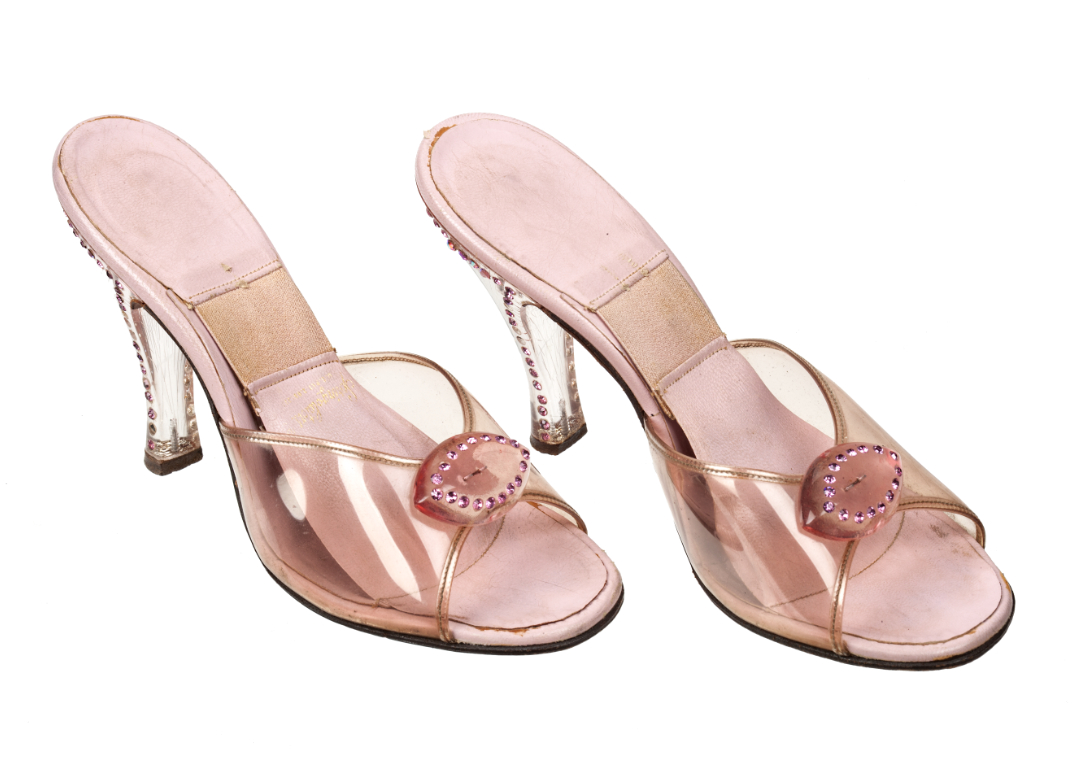
#10 Open-toe Mules, about 1950s
Leather, plexiglass, rhinestones, and elastic Spring-o-lator
These shoes belonged to none other than Hollywood icon Ginger Rogers, the Oscar-winning film star and Fred Astaire’s partner in Depression-era romantic musicals.
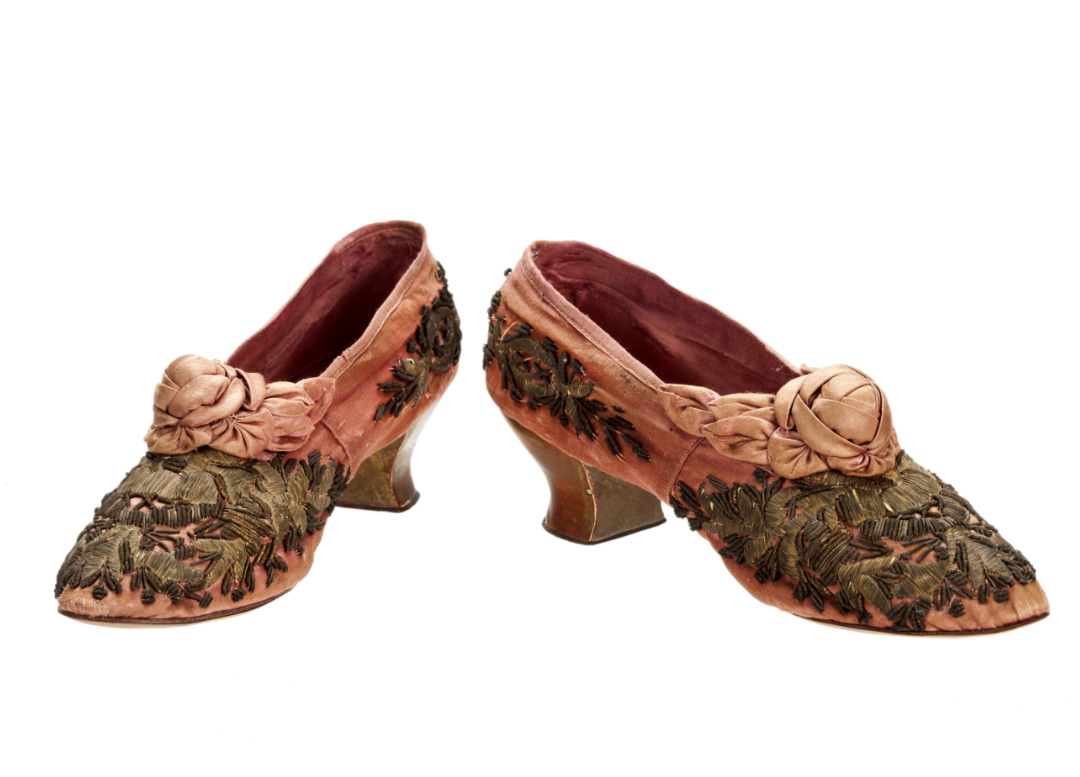
#9 Boudoir Shoes, 1867
Paris, France
Silk, embroidery, and metallic thread
These rare shoes were created for the 1867 Paris Universal Exposition. Although this World’s Fair focused on industrial production, a skilled artisan made and embroidered this pair by hand, incorporating Turkish-style goldwork embroidery.
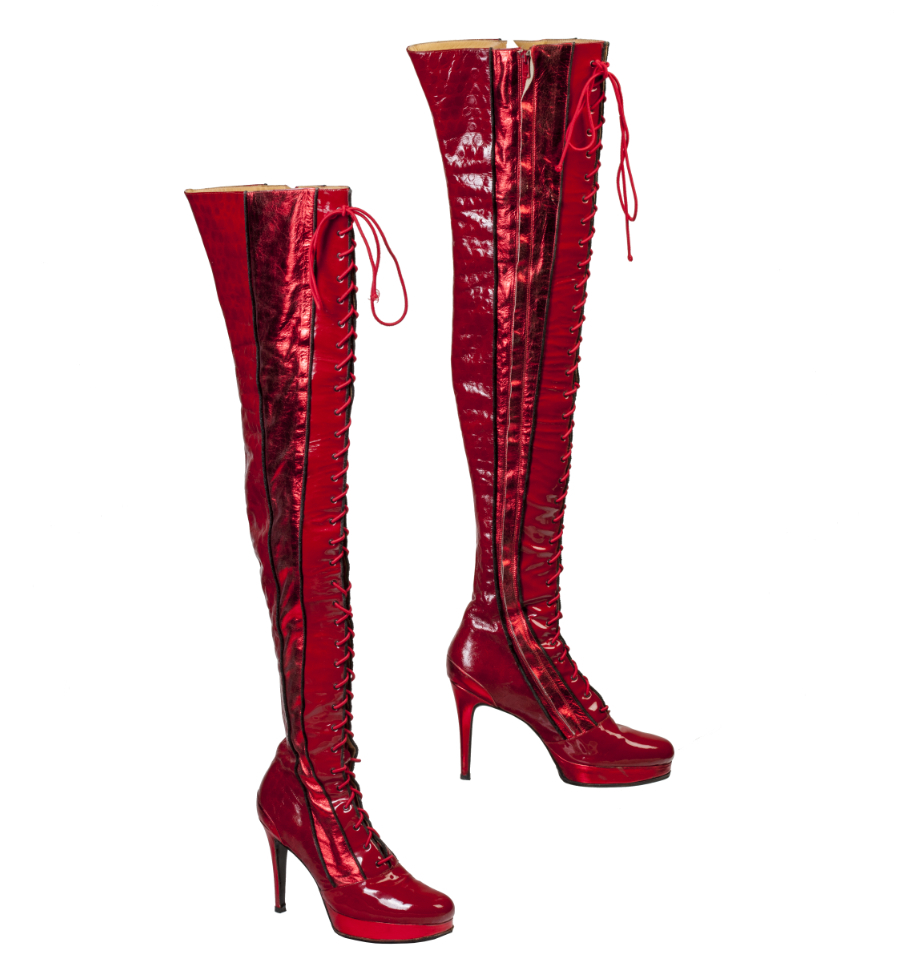
#8 Gregg Barnes (born 1956), designer
T. O. Dey (founded 1926), maker
Kinky Boots, about 2013
New York, New York
Patent metallic leathers, rubber, fabric, and metal
New-York Historical Society, Gift of Kinky Boots, 2017.6ab
Kevin Smith Kirkwood wore this fabulously fierce pair of red boots when he performed in the hit Broadway musical Kinky Boots from 2013 to 2016. The show is based on the true story of a young Englishman who inherits his family’s failing shoe factory. He saves the business by producing high-heeled footwear in men’s sizes, all with the help of Lola, the drag queen at the heart of the story.
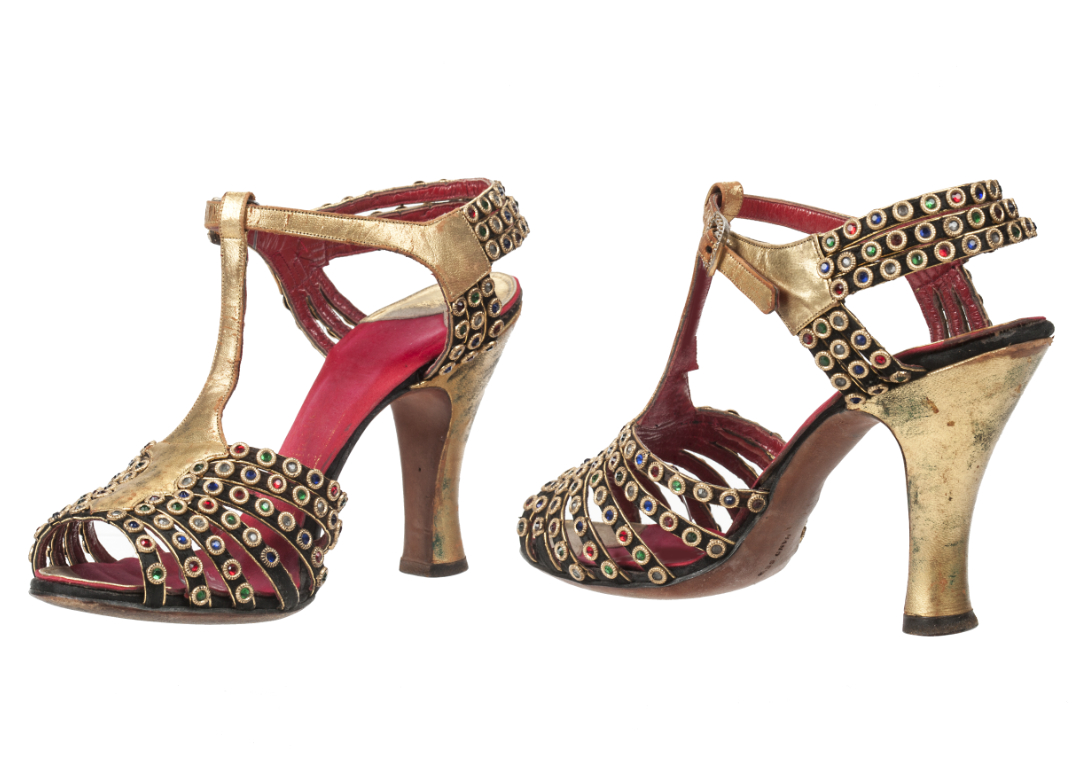
#7 T-strap Evening Sandals, about 1940s
Leather, silk, and rhinestones
Biblically themed Hollywood films of the 1940s, like Samson and Delilah (1949), inspired a fashion for gold and silver sandals. Almost immediately, designers throughout the country were making shoes like these bejeweled evening sandals that twinkled on dance floors.
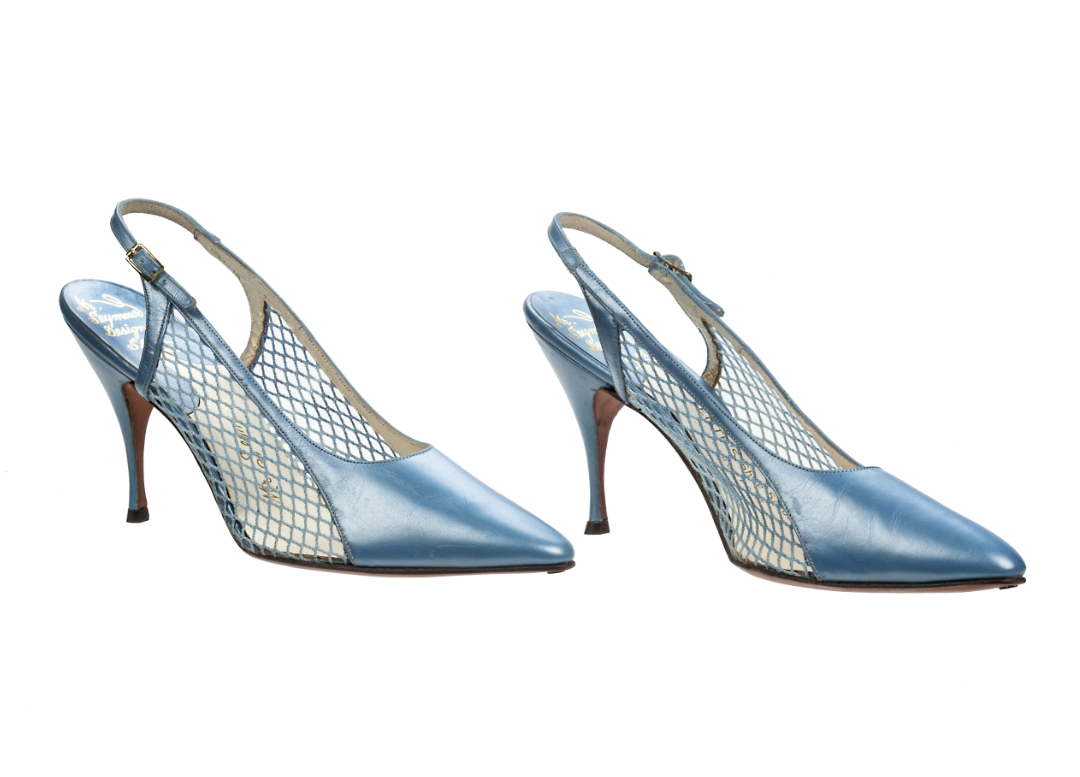
#6 Seymour Weitzman (1910–1965), designer
Pointed-toe Slingback Shoes, about 1964
Haverhill, Massachusetts
Leather and net
With their open sides and extremely pointed toes, these shoes are sleek and almost futuristic, reflecting the 1960s fascination with outer space and the race to the Moon.
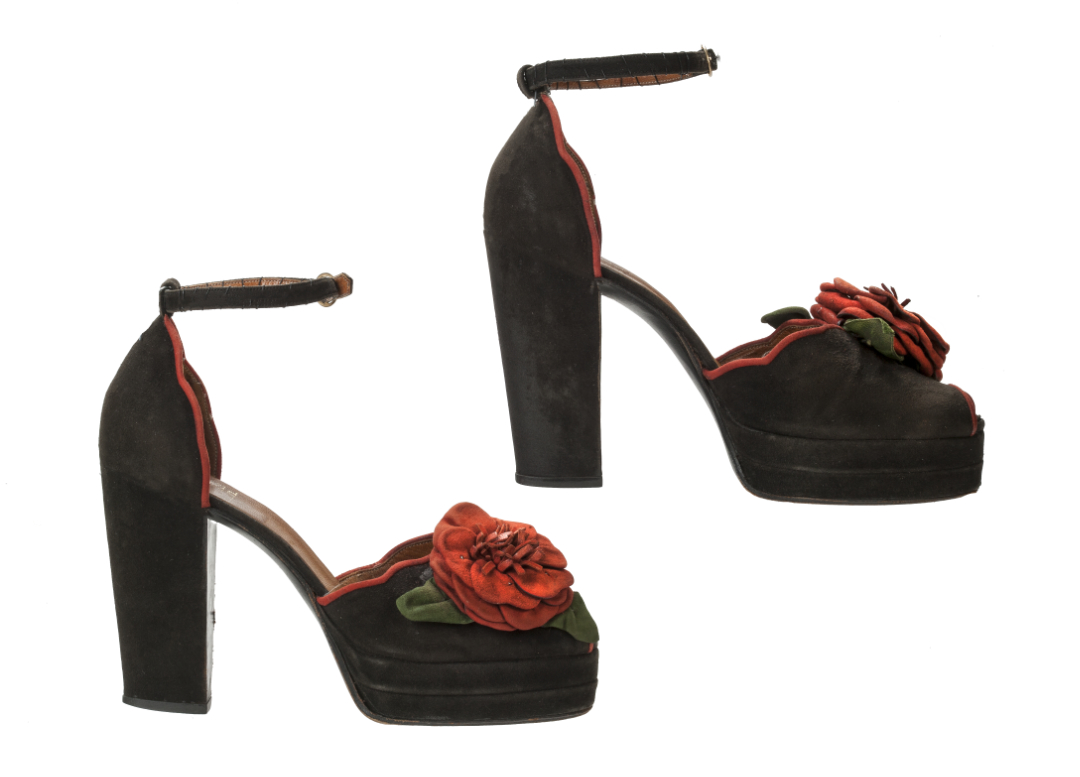
#5 The Chelsea Cobbler (founded 1967), maker
Peep-toe Platform Shoes, about 1972
London, England
Suede
During the late 1960s and early ‘70s, the emerging youth culture popularized antiwar slogans such as “Make Love, Not War” and “Flower Power.” Flowers decorated everything from vehicles to footwear, like these peep-toe platform shoes with extremely high heels.
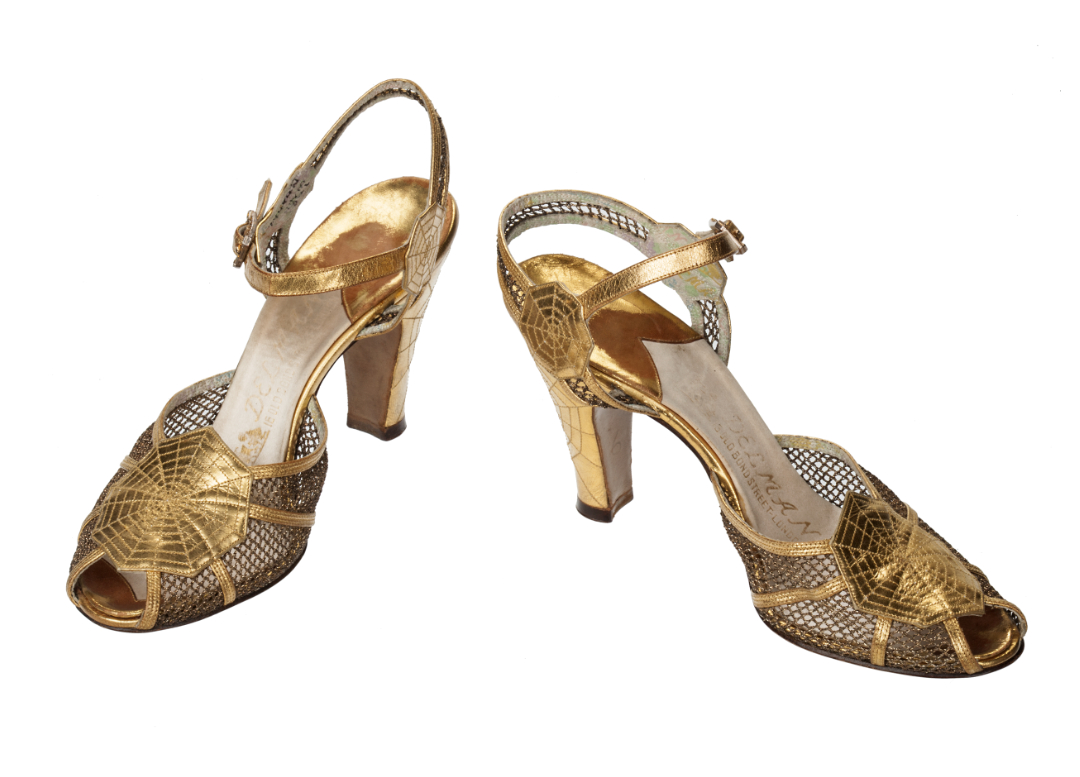
#4 Delman Shoes (founded 1919), maker
Peep-toe Evening Shoes, about 1935
New York, New York
Leather, mesh net, and rhinestone buckles
Fashion aficionados know Delman shoes for their eye-catching designs. Spider webs, symbolizing creativity and, often, entanglement, decorate the surface of these evening shoes. Perhaps the woman who wore these hoped, like a spider, to “catch” the right man.
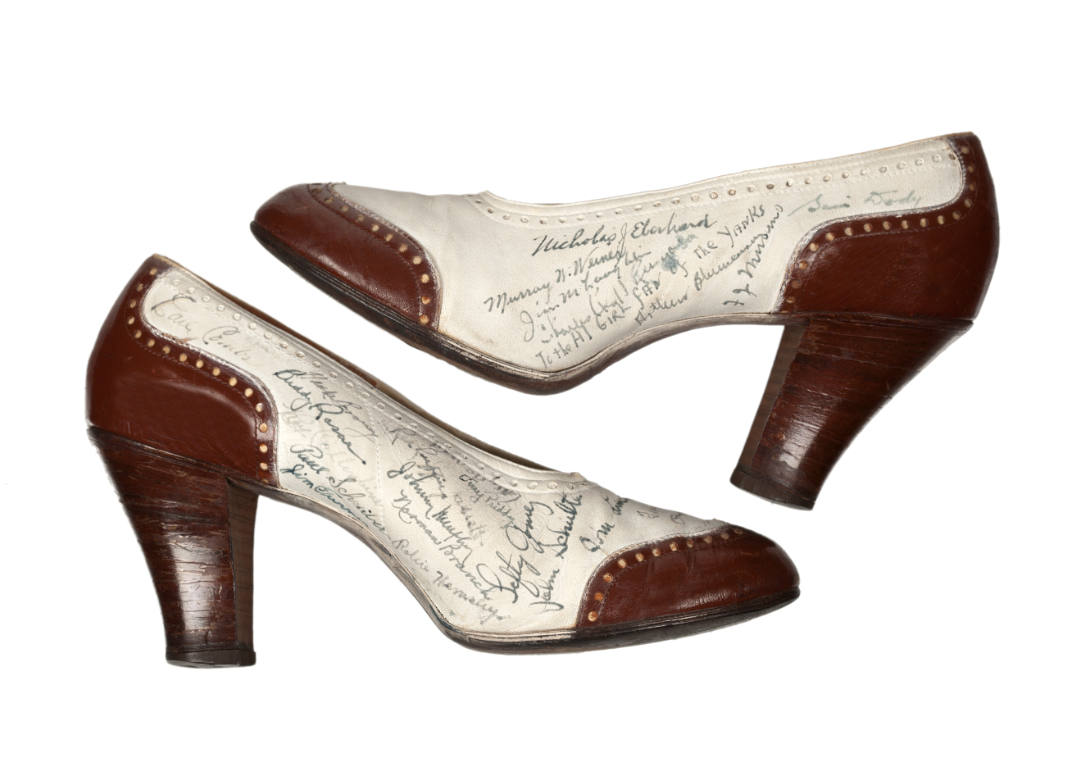
#3 Spectator Pumps Signed by the Yankees, about 1941
Leather and suede
These historic shoes were signed by 27 members of the 1941 New York Yankees, transforming a pair of everyday pumps into a one-of-a-kind piece of baseball memorabilia.
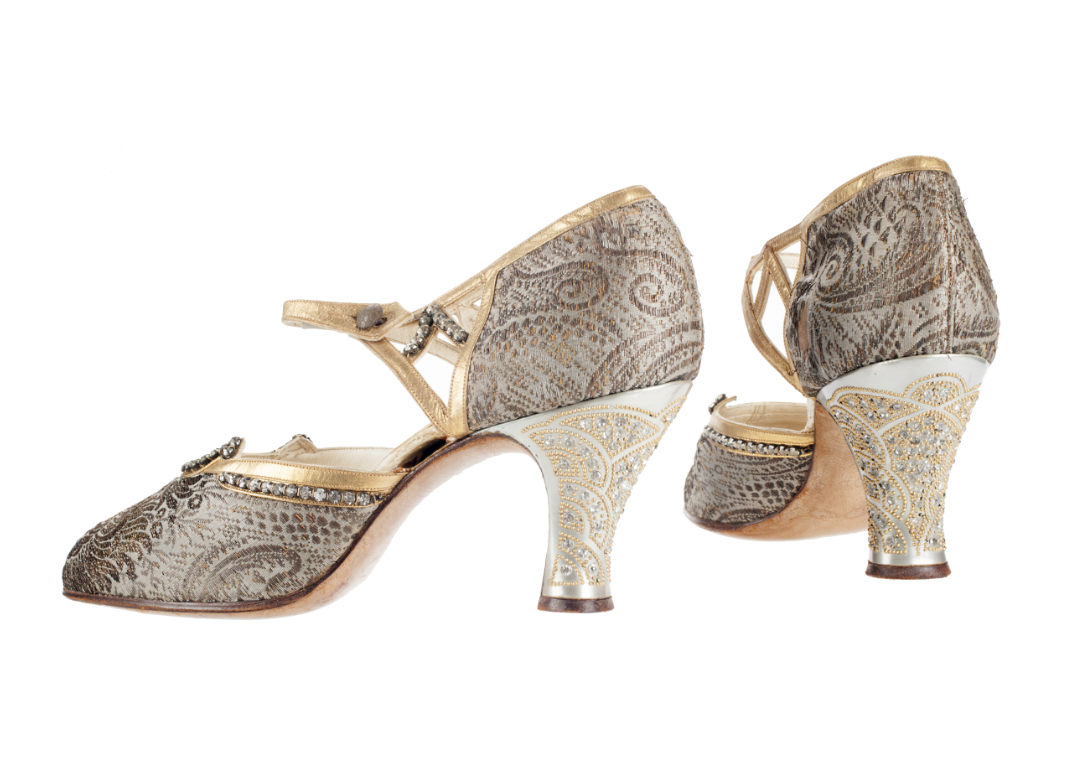
#2 Babers Ltd., maker
D’Orsay Evening Shoes, about 1928
Jersey, United Kingdom
Silk brocade, kid leather, rhinestones, and beads
These exquisite Art Deco evening shoes by Baber Limited were manufactured in Jersey—a small island located between England and France—but sold in London and other cities. A woman may have spotted this pair, studded with rhinestones and gold beads, on Oxford Street, a shopper’s paradise.
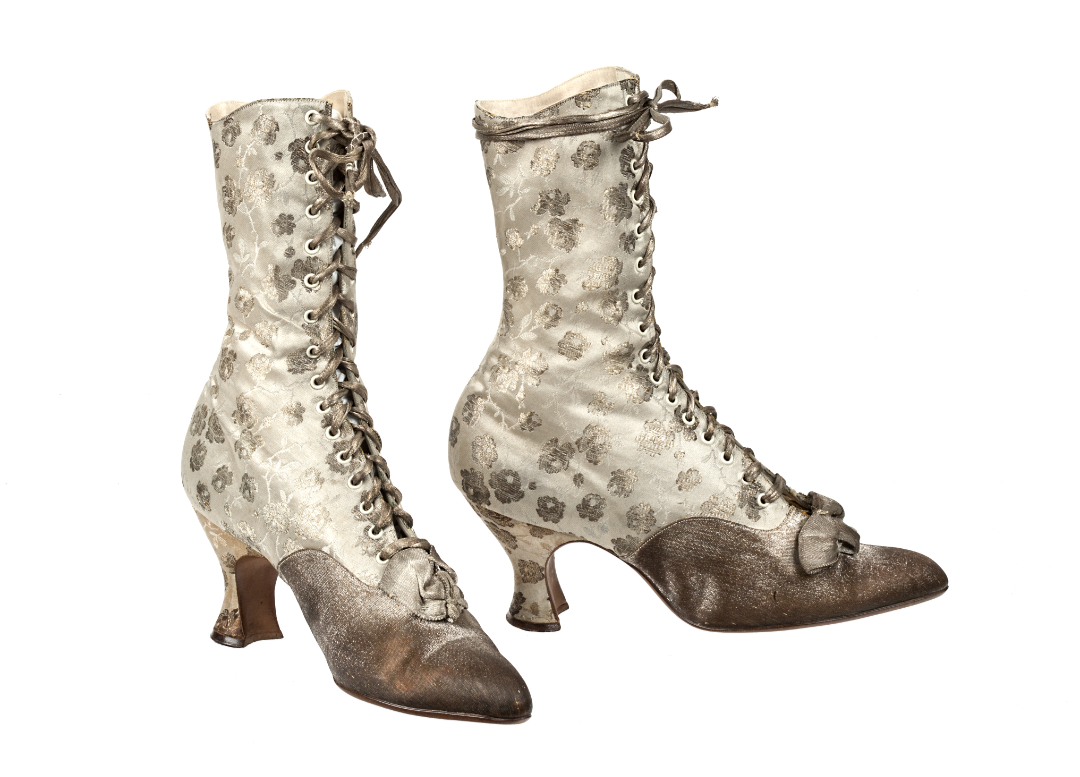
#1 Lace-up Boots, about 1900
Silk, silk brocade, and laces
Victorian ladies wore boots like these under long dresses with bell-shaped skirts. This pair is crafted from luxurious brocade fabric made with silk and metallic threads, its intricate floral pattern gleaming in the right light. Not only were these shoes made during the Victorian era (one of my favorite time periods), but they are aesthetically stunning and skillfully crafted, therefore making them my top choice!
View these stylish items in our first Taft Museum of Art exhibition of the new year. Walk This Way | Footwear from the Stuart Weitzman Collection of Historic Shoes is on display February 27–June 6, 2021, in our Fifth Third Gallery.
